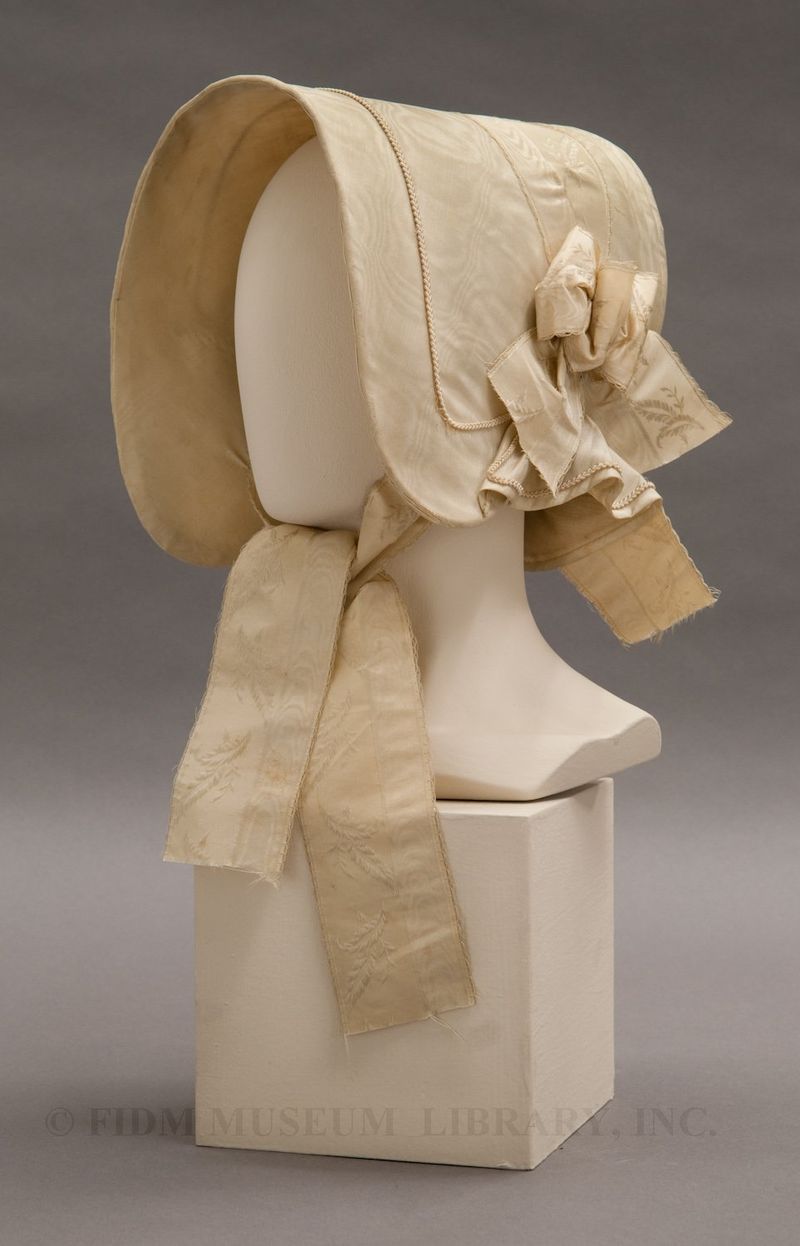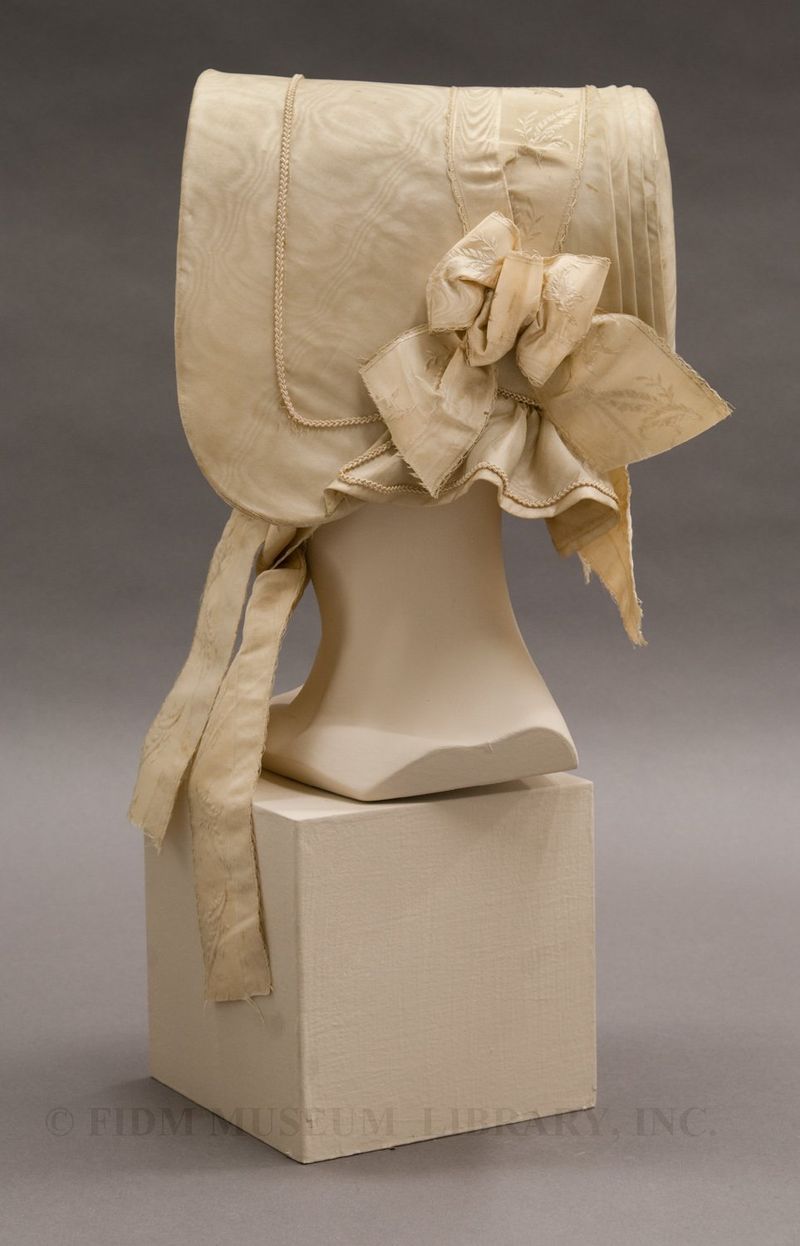c. 1845
2008.5.32
Museum Purchase
During the 1840s, headcoverings were an essential part of every women's wardrobe. Inside the home, women often wore delicate, lacy caps which covered the hair and tied under the chin. When venturing out into the world, most American women wore a bonnet made of straw or silk. In the mid-1840s, the fashionable bonnet shape was that seen here: a continuous crown and brim forming a straight line with low tabs covering the cheeks and ears. Embellishment varied, but a bow or puff of ribbons on one side, long ribbon ties at the chin and a "bavolet" were common characteristics. The bavolet, a gathered panel of fabric extending from the lower back of the bonnet, was also functional, providing sun protection for the neck. It also covered and protected the fashionable hairstyle, a knot or twist of hair worn low on the neck. The interior of the bonnet brim often featured additional decoration in the form of artificial flowers, lace or the frilled edges of a house cap peeking out from under the bonnet. Photographic evidence indicates that some women wore fancy house caps under their bonnets, particularly when visiting. The bonnet was removed to reveal the house cap only when entering a home or other appropriate indoor space.
Though bonnet styles evolved during the 1840s, changes in silhouette and embellishment were gradual enough that bonnets could be worn over several seasons, perhaps with a slight alteration to the trimmings. The newest, most stylish bonnets and dresses originated in Paris and were then disseminated to American fashion consumers through the reprinting of fashion plates in periodicals like Godey's Lady's Book. These periodicals were widely distributed and redistributed among American women. While well-to-do women purchased hats from local milliners, many made bonnets (along with various other items of clothing and accessories) at home. Basing their creations on bonnets described in fashion magazines, those worn by local tastemakers and personal taste, women created bonnets aligned with fashionable ideals. Guidance in construction techniques could be found in instruction manuals like The Hand-Book of Millinery, written in 1847 by a Mrs. M.J. Howell. In addition to notes on material selection, construction and general good taste, she provides the following encouragement regarding bonnet selection: "A cap, or a bonnet, should not be considered merely as a covering for the head, but also as an ornament…to render more interesting the countenance on which nature has lavished her most lovely graces."1
1 Howell, M.J. The Hand-Book of Millinery London: Simpkin, Marshall, & Co. 1847: ii.



